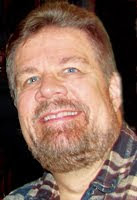Mark Twain famously said it.
Some caveman probably said it first, followed in rough order by Socrates, Buddha,
Solzhenitsyn and some White House speechwriter who stole it for a State of the Union or Inaugural.
But then Twain also said, of speechwriting, that:
“The best speech is the impromptu. ...
It takes me a three weeks to put together
a good impromptu speech.”
So writing can actually be boiled down to a simple mathematical sum: What you know, plus with you can find out in three weeks or less – that is, research.
Actually, a third factor enters the picture. Things you know to be “a stretch,” or “maybe a little bit true.”
I’ve advised often that the Writer can break rules ... as long as he knows what rules he’s breaking. Mark Twain had a great corollary:
“Get you facts first, and then you can distort ’em as much as you please.”
So with Twain’s invitation to outright fabrication, the Writer is armed with:
• What he knows.
• What he can discover through research.
• What he can stretch to fit his own devices.
• What he can fabricate out of thin air and not get caught at it.
Finally, let’s stir a quote from Ernest Hemingway into the pot: “Prose, he said, is architecture, not interior decoration.”
Two points of instruction fall from there ... that pretty prose is best buried in the garden with the other fertilizer, and that building a document from what’s left requires disciplined construction technique.
The convenient thing about telling the truth is never having to remember which lie you told to whom. But “truth” in literature can have many shades of gray, blue, jade and purple.
So, whether you’re writing a book report or a book, a fictional essay or some fictional promotion of your company’s hottest new product, create an architect’s blueprint first.
List what you know in Column A, your research in Column B, shades of gray in Column C, and jaded lies in Column D.
Column D usually proves to be highly compelling – and utterly unuseable. But it’s good to know it’s there, in any case.
But then again, maybe writing what you know isn’t all it’s cracked up to be.
–––––––––––––––––––––
Most writers regard the truth as their most valuable possession,
and therefore are most economical in its use.
– Mark Twain
Next: A mathematical construct for writers
[For personal writing assistance, go to www.fixadocument.com]

No comments:
Post a Comment